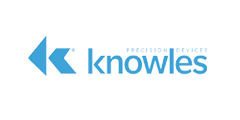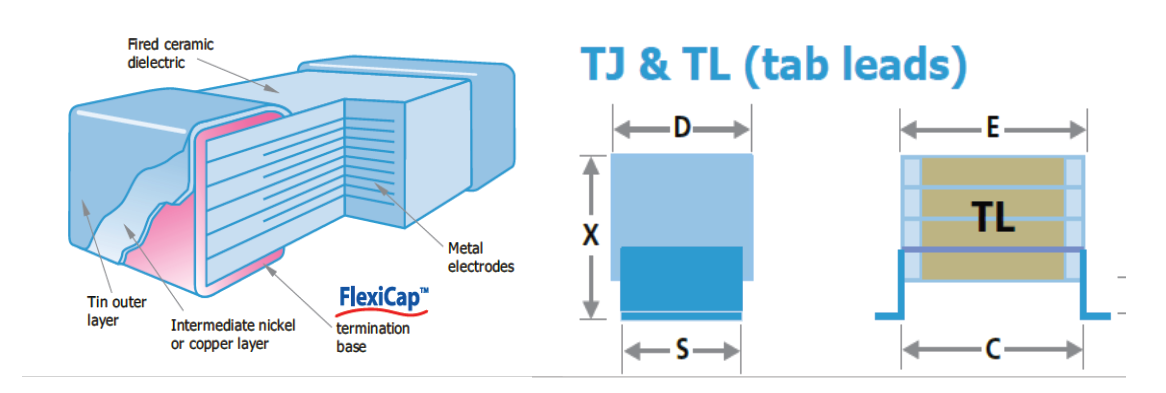Introduction to Through-hole Technology (THT) And Surface-mount Technology (SMT)

There are two main mounting schemes for placing components on a printed circuit board (PCB): through-hole technology (THT) and surface-mount technology (SMT). Given its popularity over the last few decades, it’s no surprise that designers default to SMT, but there are advantages to both schemes that are worth exploring, especially for high-reliability application designs.In this paper, Knowles will introduce the through-hole technology (THT) and surface-mount technology (SMT).
Through-Hole Technology vs. Surface-Mount Technology
THT, also known as through-hole mounting (THM), is a mounting scheme where leads on an electronic component are inserted into pre-drilled holes on a PCB. The leads are soldered to pads on the opposite side of the board. There are two main types of THTs distinguished by their lead connections: axial and radial. Axial leads run through the component in a straight line, and each end of the lead wire attaches to another component. Axial leads offer a lower-profile configuration. Alternatively, radial leads protrude from one side of the component, taking up less board space because of their perpendicular positioning. These differences are important when assessing board geometry requirements and size constraints for your application.
For decades, most components on a PCB were mounted using THT – until SMT gained popularity. SMT is a mounting scheme where electrical components are placed directly onto the surface of a PCB, no holes required. SMT was widely popularized in the 1980s because it was a simpler scheme for manufacturing automation. SMT tends to be much smaller, and it is compatible with double-sided boards. As boards evolved from single-sided to multi-layer, that was a major draw too. Many components are designed with leads beneath or around the package to suit SMT. For multilayer ceramic capacitors (MLCCs), a nickel- or copper-plated barrier protects each side of the component for termination, and leads or tabs are attached and formed specifically for SMT.

Figure 1. Many multilayer ceramic capacitors (MLCCs) are designed for SMT, with specific termination materials (left) and lead placement (right).
Advantages to SMT
Perhaps the most obvious advantage to SMT is that no PCB holes are required. SMT is secured via pads on the surface of the PCB. As mentioned, SMT tends to have a smaller footprint than radial or axial THT and can be mounted on both sides of a dense board. As electronics continue to shrink, and size, weight, and power (SWaP) become more and more critical for designers, this offers valuable efficiency. Zooming out, SMT means simpler soldering requirements as SMT only needs soldering on one side vs. both sides for THT. Additionally, SMT is secured using reflow soldering rather than wave soldering. Wave soldering is more common for THT, and it is a more complex technique that requires a controlled environment for characteristics such as temperature.
Advantages to THT
THT between a component and a PCB creates a stronger connection than SMT, where components are secured only to the surface of the board. Further, THT leads protect the electronic component from thermal and mechanical stress by absorbing it directly; SMT doesn't offer the same level of protection. Finally, regardless of the soldering requirements, THT tends to be better for testing and prototyping because it is easier to remove and replace components on the PCB manually.
SMT and THT: Have Both Tools in the Toolbox
While SMT is the newer of the two mounting schemes, it can't fully replace THT. Each method offers benefits worth weighing. SMT is efficient and cost-effective for most applications, but THT is useful for scenarios with greater mechanical, electrical, and thermal stress. For example, components like connectors and transformers may need to withstand greater mechanical impact. If advantageous, both technologies can be incorporated on the same board using different soldering techniques. For example, THT might be helpful for components that interact with attachable devices while everything else on the board may be mounted using SMT.
- +1 Like
- Add to Favorites
Recommend
- Knowles to Participate in Upcoming Baird Conference in New York on June 4, 2024
- Knowles Supertweeters Power New EarSonics Precision In-Ear Monitors
- Knowles‘ Microstrip Filters Offer a High Repeatability and Temperature Stability from -55℃ to 125℃
- Knowles Introduced the MD Series, A Range of Medical-grade Capacitors for Implantable Designs
- Knowles Extends Custom Miniaturization Capabilities to MedTech OEMs
- Knowles Partners With Ole Wolff to Deliver Compact Hybrid Driver for TWS Earphones With HD Audio and ANC
- Knowles 3-Cell Supercapacitors Support Significant Jump in Energy Storage
- Knowles and Meizu Bring Treble Performance to New Heights with LIVE AI Noise Cancelling Hi-Fi Earbuds
This document is provided by Sekorm Platform for VIP exclusive service. The copyright is owned by Sekorm. Without authorization, any medias, websites or individual are not allowed to reprint. When authorizing the reprint, the link of www.sekorm.com must be indicated.





























































































































































































































































































































































































































































































































































































































































































































































































































































































